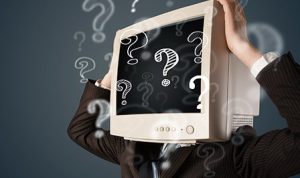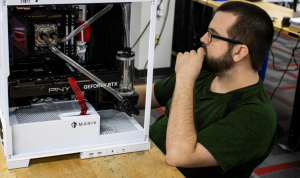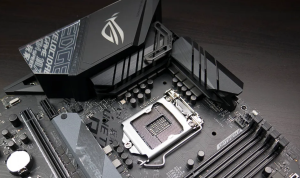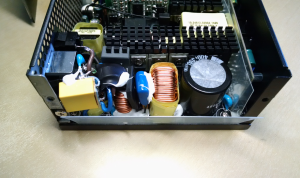Peripheral Devices What They Are and Why They Matter is a topic that delves into the essential components that enhance our computing experience. These devices, ranging from keyboards and mice to printers and external drives, play a significant role in how we interact with technology. Understanding their functions not only highlights their importance but also helps us appreciate the seamless integration they provide to everyday tasks.
In today’s digital landscape, where efficiency and connectivity are paramount, peripheral devices bridge the gap between a user and their technology. They expand the capabilities of computers and facilitate interactions across various platforms, making our tasks easier and more efficient. As we explore the significance of these devices, it becomes clear that they are integral to both personal and professional environments.
In today’s fast-paced world, where technology and globalization have transformed the way we communicate and interact, the importance of effective communication cannot be overstated. Whether in personal relationships, professional settings, or even casual encounters, being able to convey thoughts and ideas clearly is essential. This article explores various facets of communication, including its significance, types, barriers, and tips for improvement.
The Significance of Communication: Peripheral Devices What They Are And Why They Matter
At its core, communication is the process of exchanging information, thoughts, and feelings between individuals. It’s the backbone of our social interactions and a vital component in building and maintaining relationships. Effective communication fosters understanding, reduces conflict, and enhances collaboration. In the workplace, for example, clear communication can lead to improved productivity, greater job satisfaction, and a positive organizational culture.
Types of Communication
Communication can be categorized into several types, each serving unique purposes and practices:
1. Verbal Communication
Verbal communication involves the use of spoken or written words. It’s perhaps the most direct form of communication, allowing for immediate feedback. This type can occur in various forms, such as face-to-face conversations, phone calls, and written messages like emails and reports. Effective verbal communication requires clarity, tone, and active listening.
2. Non-Verbal Communication
Non-verbal communication encompasses body language, facial expressions, gestures, and even tone of voice. It plays a significant role in conveying emotions and reinforcing messages. For instance, a smile can express friendliness, while crossed arms may suggest defensiveness or discomfort. Understanding non-verbal cues can enhance interpersonal interactions.
3. Visual Communication
This type of communication uses visual aids, such as graphs, charts, and images, to convey information. Visual communication can be particularly effective in presentations, as it can help to clarify complex information and engage the audience’s attention. The adage “a picture is worth a thousand words” rings especially true in this context.
4. Written Communication
Written communication is a critical skill in both personal and professional realms. It includes everything from text messages to formal reports. The ability to write clearly and effectively is paramount, as it can influence perceptions and outcomes. Consideration of the audience, tone, and purpose is key to successful written communication.
Barriers to Effective Communication
Despite the various forms and significance of communication, several barriers can hinder effective exchanges. Recognizing these barriers is the first step in overcoming them:
1. Language Differences
In our diverse world, language barriers can create misunderstandings and prevent effective communication. Misinterpretations can arise from nuances in language, dialects, or even slang. Being mindful of language differences and striving for simplicity can help bridge these gaps.
2. Emotional Barriers
Emotions can significantly impact how we communicate. Stress, anger, or anxiety can cloud judgment and lead to miscommunication. Developing emotional intelligence and self-awareness can enhance the ability to communicate effectively, particularly in challenging situations.
3. Perceptual Barriers
Each individual perceives the world differently based on their experiences, beliefs, and values. These perceptions can create biases, leading to misunderstandings. To mitigate this barrier, it’s essential to approach conversations with an open mind and a willingness to understand different perspectives.
4. Physical Barriers
Physical barriers, such as distance and environmental noise, can obstruct communication. In a workplace setting, for example, employees who work remotely may struggle to communicate effectively with their team. Utilizing technology, such as video conferencing tools, can help overcome these physical barriers.
Tips for Improving Communication Skills
Improving communication skills is a lifelong journey that can lead to enhanced relationships and overall success. Here are some practical tips:
1. Active Listening
Active listening is a crucial component of effective communication. It involves fully concentrating on the speaker, understanding their message, and providing feedback. Techniques such as nodding, summarizing what has been said, and asking clarifying questions can demonstrate that you are engaged and value the other person’s input.
2. Be Clear and Concise
When conveying a message, strive for clarity and brevity. Avoid jargon or overly complex language that might confuse your audience. Instead, use straightforward language and get to the point quickly to ensure that your message is understood.
3. Be Mindful of Non-Verbal Signals
Pay attention to your body language and that of others during conversations. Non-verbal cues can reveal much about how someone is feeling and can either reinforce or contradict what is being said. Being aware of these signals can enhance understanding and rapport.

4. Adapt Your Communication Style, Peripheral Devices What They Are and Why They Matter
Different situations and audiences may require different communication styles. Being adaptable and responsive to the needs of your audience can greatly improve the effectiveness of your message. Whether you’re speaking to a colleague, a client, or a friend, consider their preferences and adjust accordingly.
Conclusion
In conclusion, effective communication is a vital skill that can enhance personal and professional interactions. By understanding the types of communication, recognizing barriers, and actively working to improve our skills, we can foster better relationships and contribute positively to our environments. Remember, communication is not just about speaking; it’s also about listening, understanding, and connecting with others. As we navigate the complexities of our daily lives, let us strive for clarity and connection in our conversations.






